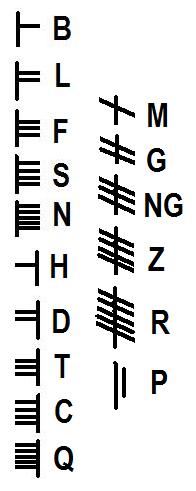I apologise for jumping to that conclusion, Rokcet. I was obviously wrong in that assessment. Mea culpa.

But interestingly, I think this discussion highlights the nub of our problem in our trying to understand early man and how he thought.
For instance, let's analyse what we call writing and what we call design.
Much of the cognitive skill for what we call writing has been attributed, by scientists, to the left hand hemisphere of the brain. Whereas the pictorial/metaphor (design) skills are attributed to the right.
Now it is my understanding that early man used both hemispheres in a more holistic way. I've come to this conclusion from practising shamanism, which has put me much more in touch with the right hemisphere. When I view many of the ritual finds that turn up from time to time, I see them in a different light to someone who is not of this way of thinking.
So let's go back to what we call writing .... in essence, what is it? What is writing? It is lines on a page, and not even a page sometimes ... it can be lines on a stelae or a gravestone or a signpost or ...anywhere, even an ostrich shell. These lines are formed to create symbols which repeat themselves in varying fashions over and over into patterns that we've been taught to recognise as sounds. These sounds go to make up words to which we also been taught to attribute specific meanings.
So I'm sure you can grasp where I'm going with this ... if I'm right that early man was more in touch with the right hemisphere of his brain, then it would be no surprise to find that his method of communication was more pictorial, more design-influenced. Add to that ~ and this is why I put the Ogham up here ~ we have at least one example of an early language which was based on long parallel lines intersected by regularly spaced short ones (as was that on the ostrich shells at Diepkloof) and so perhaps we can start to see this from a different perspective?
So to go back to the article, I don't believe it is the researchers' wishful thinking but that the logical steps taken to reach the above conclusion were just not included in the article for very good reason ~ it is not The Times or the Daily Mail. This story came from Archaeology Daily News who assume that most of their readers would have enough knowledge of this particular subject not to need it to have it spelled out to them (no pun intended!

) Of course, they could have been wrong in that assumption ...because it was not understood here.

